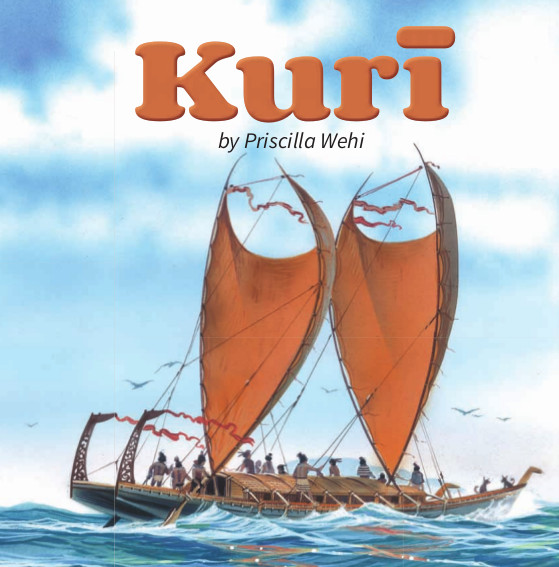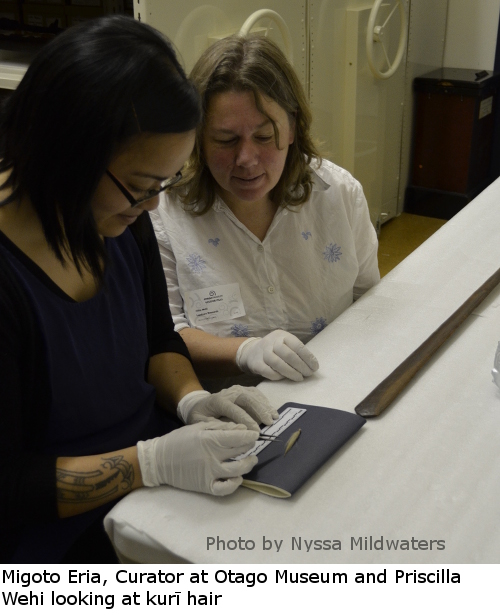Kurī, the Polynesian dog in Aotearoa

 I hangā tahi haere mai te kurī i te taha o te tangata, ā, tērā pea i noho tata mai hei hoa mō te tangata mō ngā tau 15,000. Engari kua ngaro ētahi tūmomo kurī pēnei i te kurī Māori. Ko te tangata te pūtake o ēnei ngarohanga, he āhuatanga kē atu rānei te take? Ka tātari ahau i ngā tuhinga me ngā kōrero tuku iho e pā ana ki te kurī, he aromātai i te whai wāhitanga mai ki ngā whakapono me ngā tikanga a te Māori, ā, i pēhea te huri o aua tikanga i te taenga mai o Tauiwi.
I hangā tahi haere mai te kurī i te taha o te tangata, ā, tērā pea i noho tata mai hei hoa mō te tangata mō ngā tau 15,000. Engari kua ngaro ētahi tūmomo kurī pēnei i te kurī Māori. Ko te tangata te pūtake o ēnei ngarohanga, he āhuatanga kē atu rānei te take? Ka tātari ahau i ngā tuhinga me ngā kōrero tuku iho e pā ana ki te kurī, he aromātai i te whai wāhitanga mai ki ngā whakapono me ngā tikanga a te Māori, ā, i pēhea te huri o aua tikanga i te taenga mai o Tauiwi.
The kurī, sometimes called the Polynesian dog, was the only domesticated animal successfully brought by Polynesian explorers to Aotearoa New Zealand. Kurī were both companions and food, and their skin and hair were used to make magnificent cloaks or kahukurī. However, this morphologically and behaviorally distinct dog disappeared from New Zealand in the 19th century. My research explores the relationship between kurī and humans. I do this by examining historical pictures and documents, and by analysing hair and bones to find out more about kurī diet and movement across the country.
 I talk about some kurī that are famous in Maori tradition in this story for school age students.
I talk about some kurī that are famous in Maori tradition in this story for school age students.
Hair Online Database

 In the Hair Online Database project, I worked with microscopist and engineer Dr Bronwyn Lowe. We show what hair from different mammals looks like under the microscope, and how you can identify a species from its hair. This helps museum curators identify what materials are used to make different objects, or treasures, that now reside in museums. The hair database can also be useful if you have sticky ‘hair traps’ designed to collect hair from animals (such as pigs, possums or rats) moving around a forest, so you can work out what species are living there.
In the Hair Online Database project, I worked with microscopist and engineer Dr Bronwyn Lowe. We show what hair from different mammals looks like under the microscope, and how you can identify a species from its hair. This helps museum curators identify what materials are used to make different objects, or treasures, that now reside in museums. The hair database can also be useful if you have sticky ‘hair traps’ designed to collect hair from animals (such as pigs, possums or rats) moving around a forest, so you can work out what species are living there.
Other resources
Here, journalist Wena Harawira interviews me about the kurī for Native Affairs.
 Listen to the interview with myself and Otago Museum curator Migoto Eria conducted by Veronika Meduna for Our Changing World RNZ.
Listen to the interview with myself and Otago Museum curator Migoto Eria conducted by Veronika Meduna for Our Changing World RNZ.
- I spoke to SciBlogs about the importance of our research on kurī for the modern ecology.